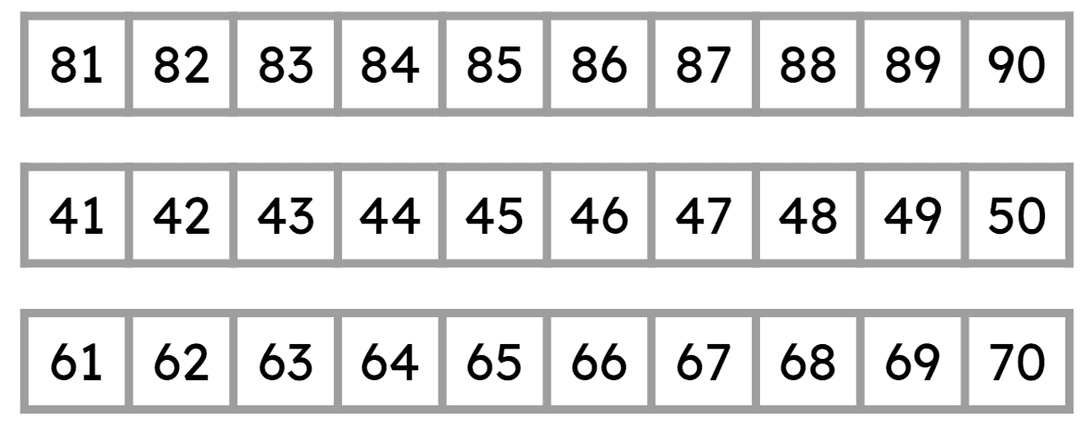Myths about teaching can hold you back
- Year 2
Explore the counting sequence for counting to 100 and beyond
I can explore the counting sequence for counting to 100 and beyond.
- Year 2
Explore the counting sequence for counting to 100 and beyond
I can explore the counting sequence for counting to 100 and beyond.
These resources will be removed by end of Summer Term 2025.
Switch to our new teaching resources now - designed by teachers and leading subject experts, and tested in classrooms.
These resources were created for remote use during the pandemic and are not designed for classroom teaching.
Lesson details
Key learning points
- There is set counting sequence for counting to 100 and beyond.
- The patterns in the numbers make counting to 100 and beyond easier.
- The tens digit in a two-digit number indicates which decade it belongs to.
- The ones digit in two-digit number follows the pattern 1, 2, 3, 4, 5, 6, 7, 8, 9
- We can count the numbers in two ways. This is called dual counting.
Keywords
Decade numbers - A set of ten numbers, all beginning with the same number of tens.
Digit - A single symbol used to make a numeral
Dual counting - Counting the same set of numbers in two different ways.
Common misconception
Children may think counting stops at 100 or the regularity of the pattern does not extend past 100
Count beyond 100 when rote counting, trailing off after 103 or 104 and discussing what would be next to make explicit that numbers do not 'end' at 10. Show numbers past 100 on equipment used.
To help you plan your year 2 maths lesson on: Explore the counting sequence for counting to 100 and beyond, download all teaching resources for free and adapt to suit your pupils' needs...
To help you plan your year 2 maths lesson on: Explore the counting sequence for counting to 100 and beyond, download all teaching resources for free and adapt to suit your pupils' needs.
The starter quiz will activate and check your pupils' prior knowledge, with versions available both with and without answers in PDF format.
We use learning cycles to break down learning into key concepts or ideas linked to the learning outcome. Each learning cycle features explanations with checks for understanding and practice tasks with feedback. All of this is found in our slide decks, ready for you to download and edit. The practice tasks are also available as printable worksheets and some lessons have additional materials with extra material you might need for teaching the lesson.
The assessment exit quiz will test your pupils' understanding of the key learning points.
Our video is a tool for planning, showing how other teachers might teach the lesson, offering helpful tips, modelled explanations and inspiration for your own delivery in the classroom. Plus, you can set it as homework or revision for pupils and keep their learning on track by sharing an online pupil version of this lesson.
Explore more key stage 1 maths lessons from the Counting and representing the numbers 20 to 99 unit, dive into the full primary maths curriculum, or learn more about lesson planning.

Licence
Prior knowledge starter quiz
6 Questions
Q1.Which of these rows from the one hundred square should come first when counting forwards to 100?

Q2.Sort these numbers in the order you would say when counting forwards.
Q3.Andeep is counting backwards in ones. What is the next number he will say?

Q4.Laura is counting forwards in ones on her Gattegno chart. Which number has she tapped?

Q5.Which of these numbers has 8 tens?
Q6.Numbers can be said in different ways. Match the numbers that are the same.
4 tens 6
3 tens 9
9 tens 3
6 tens 4


